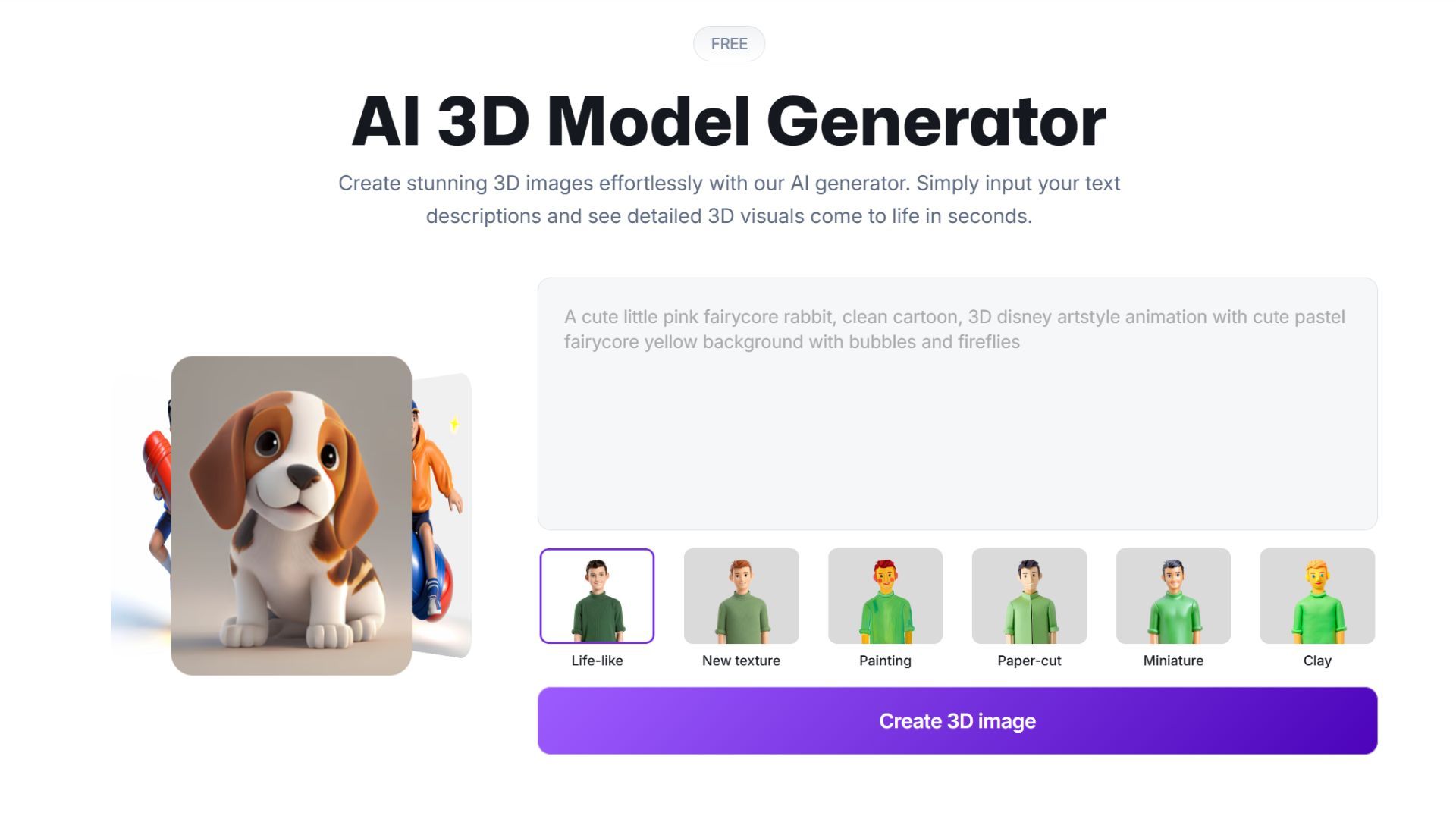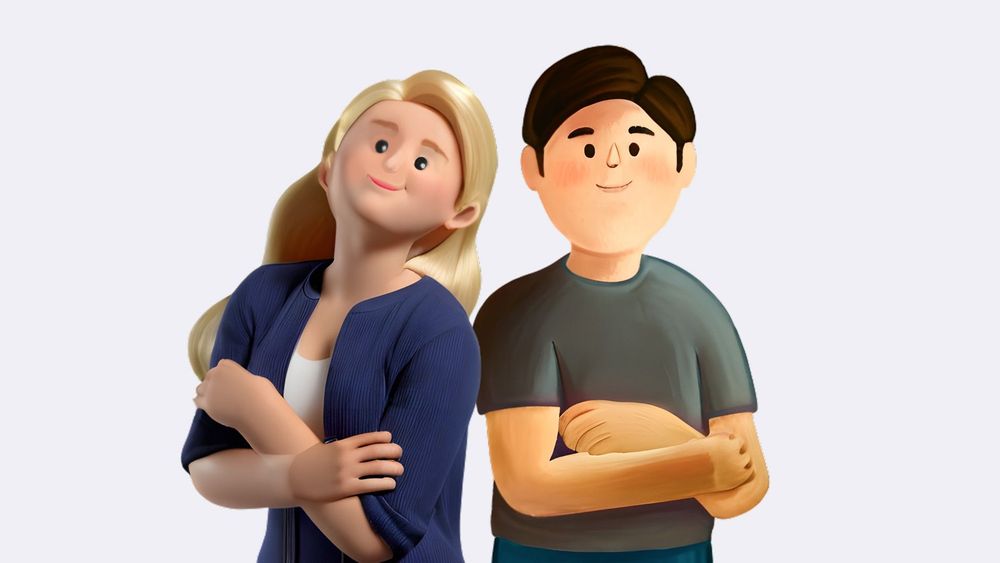Converting 2D images into 3D models is a groundbreaking technology that breathes life into flat images. This conversion process uses sophisticated algorithms to interpret the 2D information and construct a 3D representation that has depth, volume, scale, and perspective.
The applications of 3D models are vast and varied, including 3D printing, where models can be brought into the physical world; animation and video games, for creating immersive experiences with real world objects; architecture and engineering, for visualizing designs before they are built; and in marketing and branding, for creating eye-catching visual content.
With the rise of 3D technology, there is a growing demand for apps that can easily and accurately convert 2D images into 3D models. In the next stage of this article, we will explore some of the best apps available for making 3D models from 2D images.
2D to 3D Converter: Top 6 Tools to Try
Pixcap's AI 3D Model Generator
Pixcap's 2D to 3D converter is a web-based tool that uses artificial intelligence to convert 2D images into high-quality 3D models. The app is user-friendly and requires no prior knowledge of 3D modeling.
It is the best solution for brands and businesses looking to create AI 3D models, AI 3D icons for web/app design, marketing and advertising purposes, as well as individuals who want to bring their digital art to life.
The process is simple: upload your 2D image, choose the desired AI style or input a text prompt describing how you want your 3D model to look, you will get a realistic 3D model in just a few clicks.
Update: Pixcap's 2D-to-3D converter is not available at this moment. However, you can always use text-to-3D generator for free!
>> TRY AI 3D MODEL GENERATOR HERE <<

Interested in creating 3D models for web/app design? Don't forget to check out our library of 15,000+ customizable 3D icons, illustrations and rigged characters.

Meshroom
Meshroom is a free, open-source software program that allows you to create 3D models from photographs using a technique called photogrammetry. It's a powerful tool for hobbyists and professionals alike, but it has its own strengths and weaknesses to consider.
New users might find themselves lost in a maze of technical terms and settings and a complex interface. The software itself handles most of the photogrammetry process, but it can be picky about your photos. Blurry shots, bad lighting, or simply not enough pictures can lead to disappointing results. Plus, the process itself can take time, especially for detailed objects or large scenes.
Despite these challenges, Meshroom is a powerful tool. With good photos and some patience, you can create high-quality 3D models. Meshroom is great for hobbyists who want to experiment with photogrammetry or professionals on a budget. However, keep in mind Meshroom is more focused on generating the model, not editing it. You might need other software for fine-tuning.
Embossify
This online tool is a convenient option for converting 2D images into 3D STL files, which are perfect for 3D printing. Embossify uses a process called pixel-by-pixel tessellation to create detailed 3D print models from your images.
However, Embossify does have its limitations. The size limit for images is 10 MB, which might not be enough for high-resolution photos. Also, it only works with grayscale images, so if you want to convert a colored image file into a 3D model, you'll have to convert it to grayscale beforehand.
Blender
Blender, the popular free 3D creation suite, offers exciting possibilities for converting 2D image to 3D model, but it's not a one-click conversion process. While it lacks automatic features, Blender provides a powerful and flexible workflow for skilled users.
Unlike automatic converters, Blender grants you complete control over the 3D model creation process. You can meticulously trace over your 2D image, define object depth, and manipulate vertices for precise details. Blender offers a vast array of tools for sculpting, texturing, and rigging your 3D model. This allows you to transform a basic 2D outline into a complex and animated 3D object.
Blender boasts a comprehensive feature set, but it comes with a complex interface and a learning curve. For those new to 3D modeling, Blender's 2D to 3D workflow might be overwhelming. It's best suited for users with some 3D modeling experience.
SketchUp
Sketchup is a popular 3D modeling program known for its user-friendly interface and intuitive tools. It also offers a streamlined workflow for converting 2D images into 3D models, making it a great choice for beginners and experienced users alike.
Compared to more complex 3D software, SketchUp offers a user-friendly interface that makes it easier to grasp the basics of 2D to 3D conversion. Sketchup's core strength lies in its simple "trace and extrude" approach. You can import your 2D image as a base and use tools to extrude shapes and lines, giving your image depth and transforming it into a basic 3D model.
Sketchup offers texturing options, but they might be less comprehensive compared to software designed specifically for detailed texturing and shading. If your goal is to create animated 3D models for games or films, SketchUp's focus on building design might not be the best fit.
Autodesk
Instead of one program, Autodesk offers a toolbox. Different software (AutoCAD, Inventor etc.) tackles 2D to 3D conversion for specific design fields with specialized tools. Pro-level features and power come at a cost and require steeper learning. Products such as Maya and 3ds Max are more commonly used for animation and visual effects in the entertainment industry.
One of Autodesk's strengths is its compatibility with other software. With its wide range of programs, you can easily transfer your 2D designs into different stages of the 3D modeling process or integrate them with other software for a more comprehensive workflow.
The complexity of Autodesk's software can be daunting for beginners, but it offers a high level of customization and flexibility for advanced users.
Conclusion
Choosing the right tool for converting 2D designs to 3D models boils down to specific project needs and your level of expertise.
If your projects demand intricate details, such as 3D characters for gaming or movies, professional-grade tools are more suitable. These programs offer advanced features that cater to the more detailed and complex requirements of high-end 3D modeling, though they come with a steeper learning curve and higher cost.




